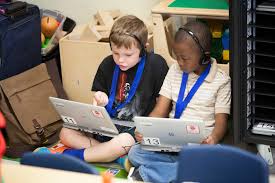In our visually saturated culture, forward-thinking teachers are recognizing the urgent need to develop students’ visual literacy—the ability to critically analyze, interpret, and create visual media. Kids animated shows, with their rich combination of visual storytelling, character development, and narrative complexity, provide ideal texts for teaching these essential skills. Far from being passive entertainment, these programs can serve as sophisticated visual texts when approached with intentional instructional strategies.
The thoughtful integration of kids animated shows into visual literacy instruction allows teachers to meet students where they are—immersed in a world of screens and images. Rather than dismissing children’s media consumption as mere entertainment, educators can transform familiar animated content into opportunities for developing critical viewing habits. This approach acknowledges children’s existing expertise as media consumers while elevating their ability to engage thoughtfully with the visual texts that dominate their lives.
Media literacy experts emphasize that visual comprehension requires specific skills distinct from print literacy. Viewers must interpret color symbolism, visual metaphors, camera angles, character design, and other visual elements that convey meaning. Animation, with its deliberately constructed visual world, offers particularly rich opportunities for examining how these elements create meaning and influence viewer response.
The multilayered nature of animated programming makes it particularly valuable for teaching close reading of visual texts. A single frame might contain meaningful background details, character positioning that reveals relationships, color choices that convey mood, and visual symbolism that enriches the narrative. Teaching students to notice and analyze these elements helps them become more sophisticated consumers of all visual media.
Animation techniques themselves provide fascinating learning opportunities. Different animation styles—from traditional hand-drawn animation to stop-motion to computer-generated imagery—reflect artistic choices that influence how stories are told and received. Comparing various techniques helps students understand how the medium shapes the message in visual storytelling.
Critical questioning transforms passive viewing into active analysis. Teachers can guide students to consider questions like: “How does the character design influence our perception of personalities?” “What does the setting tell us about the story world?” “How do color choices communicate mood or foreshadow events?” These inquiries develop analytical skills that transfer to other visual media and even to traditional literature.
Character representation in animated shows raises important questions about diversity, inclusion, and stereotyping. By examining who is portrayed, how they’re depicted, and whose stories are centered or marginalized, students develop critical awareness of representation issues that extend beyond animation to all media. This analysis helps children become more thoughtful creators and consumers of visual culture.
Cross-cultural visual literacy develops when students encounter animated content from diverse global traditions. Japanese anime, European stop-motion, and various cultural animation styles offer windows into different visual languages and storytelling conventions. This exposure helps students understand that visual literacy, like verbal literacy, encompasses multiple “dialects” and cultural contexts.
The persuasive power of visual media makes critical viewing especially important. Commercial animated programs often include embedded advertising or promote consumerist values through merchandise tie-ins. Teaching students to recognize and evaluate these persuasive elements helps them navigate a media landscape designed to influence their attitudes and behaviors.
Creative production complements critical analysis in comprehensive visual literacy education. After studying animation techniques and storytelling strategies, students can create their own simple animated projects. This production experience deepens their understanding of how visual choices shape meaning, while developing valuable creative expression skills.
Digital citizenship connects directly to visual literacy instruction. As students learn to analyze animated content critically, they develop the evaluative skills needed to navigate online visual information responsibly. The ability to question sources, recognize manipulation, and evaluate claims becomes increasingly crucial in our digital information environment.
Assessment of visual literacy skills requires approaches that honor the multimodal nature of visual texts. Rather than relying solely on written responses, teachers might invite students to create visual annotations of animated scenes, produce video essays analyzing visual elements, or redesign characters to reflect different narrative purposes. These authentic assessments demonstrate understanding in ways that mirror real-world visual literacy practices.
As education continues evolving in response to our increasingly visual culture, animation-based visual literacy instruction will likely become more central to comprehensive literacy education. The most effective educators recognize that preparing students for success in a screen-dominated world requires explicit attention to visual communication skills that traditional curricula often overlook.

